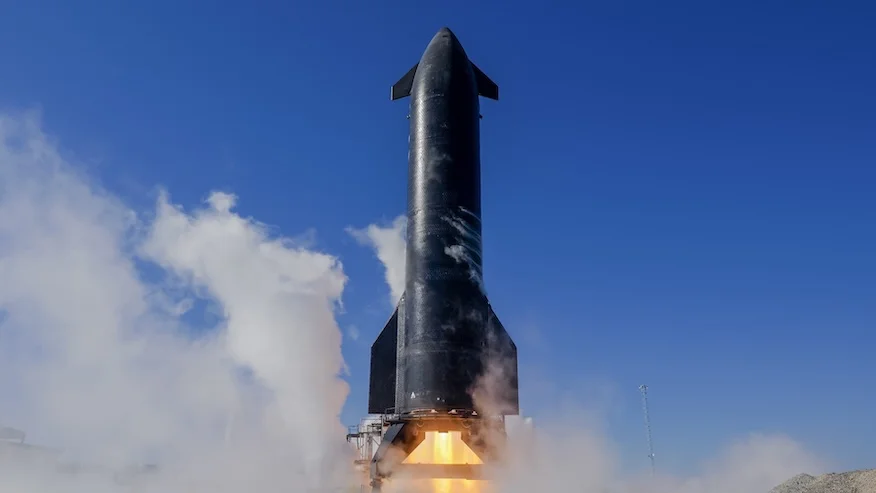
SpaceX Gears Up for Ambitious Starship Flight 9: A Deep Dive into Reuse, Engine Tests, and FAA Approval
SpaceX is back in the game with an aggressive set of objectives for Starship Flight 9, aiming for launch as early as Tuesday, May 27th, following FAA approval. This mission seeks to not only replicate but also enhance the progress of previous test flights, pushing the boundaries of reusable rocket technology. The company has meticulously analyzed the Flight 8 mishap, attributing it to propellant mixing in a Raptor engine, a different cause than Flight 7's vibrations, showcasing continuous learning and adaptation.

Flight 9 is a pivotal moment as SpaceX attempts to reuse a Super Heavy booster for the first time. The booster will perform a "controlled" flip, fly at a higher angle of attack, and even disable a center engine during landing, pushing the limits of its capabilities. These maneuvers are designed to conserve fuel, increase range, and gather critical data for future booster designs. The higher angle of attack, creating a flatter landing profile, will increase drag, reducing landing speed and enhancing fuel efficiency.
The upper-stage ship won't be left out of the action. All flight objectives from Flights 7 and 8 remain, including heatshield tile tests. SpaceX will remove certain tiles to test vulnerable regions and use upgraded tiles in some areas to evaluate their performance. Fittings for future return-to-tower missions, in-space engine firing, and satellite simulator deployments are also on the agenda.
According to SpaceX, the Starship Flight 8 failure was caused by propellant mixing in a Raptor engine. This probable cause is different from the reason behind Flight 7's failure, which was due to vibrations in the ship's propellant system. In fact, according to SpaceX, "mitigations put in place after Starship's seventh flight test to address harmonic response and flammability of the ship's attic section worked as designed prior to the failure on Flight 8."
According to SpaceX, the Starship Flight 8 failure was caused by propellant mixing in a Raptor engine. This probable cause is different from the reason behind Flight 7's failure, which was due to vibrations in the ship's propellant system. In fact, according to SpaceX, "mitigations put in place after Starship's seventh flight test to address harmonic response and flammability of the ship's attic section worked as designed prior to the failure on Flight 8."SpaceX added that "more than 100 long-duration Raptor firings at SpaceX's McGregor test facility" have been conducted to upgrade the ship's design and ensure similar failures do not occur on Starship Flight 9.
To ensure safety, road closures around the Starbase test site near Boca Chica Beach in South Texas are in effect. SpaceX has also detailed actions taken and changes enforced to their hardware as well as system management to better anticipate and manage Raptor hardware failures, with Raptor 3 including more efficient designs.
Starship Flight 9 is expected to last just over one hour, replicating the path of its immediate predecessor, Starship Flight 8 in March, before that mission ended in failure. SpaceX had hoped to attempt a mock Starlink satellite deployment on Flight 7 (among other tests) before attempting a "soft landing" in the Indian Ocean and sinking.
What does this ambitious push for reusability and aggressive testing signal for the future of space travel? Will SpaceX successfully navigate the challenges, paving the way for more affordable and frequent space missions? Share your thoughts and predictions in the comments below!
Related issues news
When does Starship 9 launch?
SpaceX rocket launch: When is Starship flight 9? SpaceX has announced that it is targeting Tuesday, May 27 for Starship's ninth flight test. Liftoff is scheduled for 7:30 p.m. ET from SpaceX's Starbase, the company's headquarters in Boca Chica about 23 miles from Brownsville near the U.S.-Mexico border.
Why did Starship Flight 8 fail?
In the case of Flight 8, SpaceX said one of the center Raptor engines in Starship suffered a hardware failure, details of which the company did not disclose. That failure enabled u201cinadvertent propellant mixing and ignitionu201d that caused the loss of the Raptor.